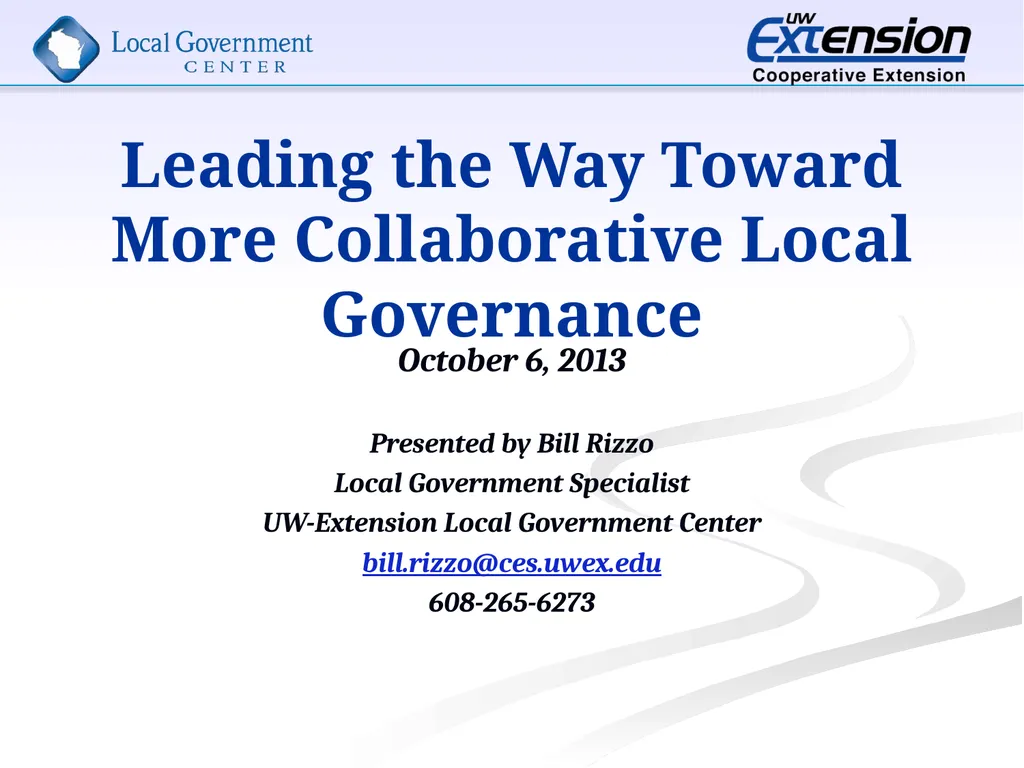
Author : lindy-dunigan | Published Date : 2025-05-23
Description: Leading the Way Toward More Collaborative Local Governance October 6, 2013 Presented by Bill Rizzo Local Government Specialist UW-Extension Local Government Center bill.rizzoces.uwex.edu 608-265-6273 Main Points Local governance (vs.Download Presentation The PPT/PDF document "" is the property of its rightful owner. Permission is granted to download and print the materials on this website for personal, non-commercial use only, and to display it on your personal computer provided you do not modify the materials and that you retain all copyright notices contained in the materials. By downloading content from our website, you accept the terms of this agreement.
Here is the link to download the presentation.
"Leading the Way Toward More Collaborative Local"The content belongs to its owner. You may download and print it for personal use, without modification, and keep all copyright notices. By downloading, you agree to these terms.













